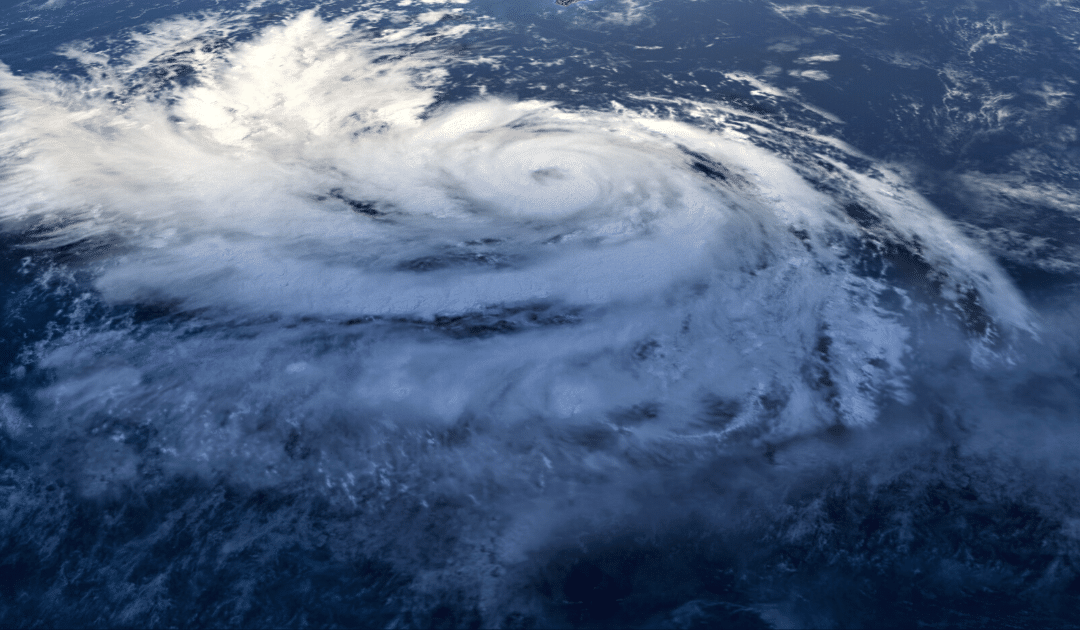Do you know the difference between a Category 2 and 3 hurricane? Do you know why a 5 is so bad? Are you clear on what safety precautions you’d need to take when expecting a Category 2 versus a 4?
Read on to better understand what the 5 hurricane categories really mean and what impacts each can bring to your home and community. Understanding the details will help you think through how to better prepare for hurricane season.
It’s All About the Wind Speed
The category numbers — 1 through 5 — come from the Saffir-Simpson Hurricane Wind Scale. Meteorologists rely on this scale to better understand a hurricane’s expected magnitude and predict the damage that will come when the storm makes landfall.
Ratings focus on sustained wind speed for the simple fact that with higher wind speeds come more damage — not only direct wind damage but also storm surges, rain-induced flooding, tornadoes, and more.
-
- Wind speeds: 74-95 mph
- Danger level: Very dangerous winds will produce some damage.
- Threat to homes, structures, and property: Winds can damage roof, shingles, siding, and gutters on well-built framed homes. Trees may topple and branches snap off. Protected glass windows generally remain intact.
- Community impacts: Potential damage to power lines and poles, leading to short-term power outages.
- Take note: Injuries to people and animals are limited and typically come from flying debris.
-
- Wind speeds: 96-110 mph
- Danger level: Extremely dangerous winds will cause extensive damage.
- Threat to homes, structures, and property: Framed homes susceptible to major roof and siding damage.
- Community impacts: Near-total power loss expected with outages lasting days to weeks. Significant structural damage to mobile homes, apartment buildings, and shopping centers. Flooding of low-lying areas is possible.
- Take note: Stock up on filtration systems for potable water.
-
- Wind speeds: 111-129 mph
- Danger level: Devastating damage will occur.
- Threat to homes, structures, and property: Major damage and/or removal of roof decking and gables possible on well-built framed homes. Mobile homes and poorly constructed homes are often destroyed. Many trees will be uprooted or snapped, blocking roadways.
- Community impacts: Water and electricity unavailable for days to weeks after the storm passes. Extensive inland flooding is possible.
- Take note: Make sure to be well-stocked with food and water if you choose not to evacuate.
-
- Wind speeds: 130-156 mph
- Danger level: Catastrophic damage will occur.
- Threat to homes, structures, and property: Well-built framed houses subject to severe damage, including loss of most of the roof and/or some exterior walls. Shopping centers and apartments also typically sustain severe structural damage.
- Community impacts: Power outages will last weeks to months. Neighborhoods in the strike zone will be uninhabitable for weeks or months.
- Take note: Sheltering in place is typically not recommended, but if you do, ensure you have a good supply of food, water, medications, etc.
-
- Wind speeds: 157 mph or higher
- Danger level: Catastrophic damage will occur.
- Threat to homes, structures, and property: Complete or almost-total destruction of framed homes, mobile homes, shopping centers, apartments, and commercial buildings.
- Community impacts: Nearly all trees will be snapped or uprooted, with many becoming airborne and acting as projectiles. Long-term water shortages should be expected, as well as a very long time to rebuild the community. The area will be uninhabitable for weeks or months.
- Take note: You should not be anywhere near this storm. Evacuate well ahead of time.
As with any natural disaster or extreme weather event, make sure you stay informed via local news and weather alerts. Listen for and follow evacuation orders.
Read our guides on how to prepare for hurricane season, pack an emergency kit, and what to do after a natural disaster.
Finally, remember that although the best hurricane preparations come well before hurricane season itself, it’s never too late to get informed and prepared.
This article is furnished by California Casualty, providing auto and home insurance to educators, law enforcement officers, firefighters, and nurses. Get a quote at 1.866.704.8614 or www.calcas.com.
- Graduation – When to Remove Your Child from Your Auto Policy - May 18, 2023
- How to Prevent Catalytic Converter Theft - May 17, 2023
- How Much Does Home Insurance Cost? - May 17, 2023






